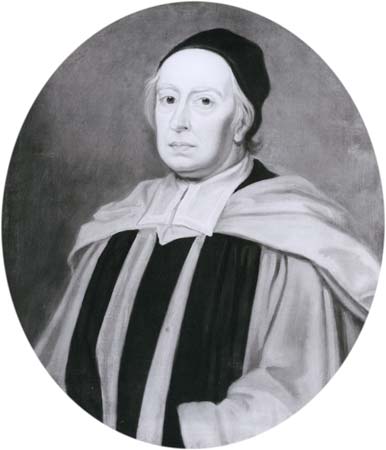
Both Alan Blencowe and Francis Blinco have sent me similar articles on Dr. Wallis, who, as far as father-in-laws go, would have to be our most prominent. Arguably without him, John Blencowe would not have become Sir John, as when Queen Mary II offered Wallis a Deanery position, he turned it down suggesting preferred favours for his Son-in-law, John Blencowe M.P.
Dr. John Wallis (1616-1703)
John Wallis was central in the scientific revolution in the late 17th century. Having made his mark as a cryptographer on the parliamentarian side during the Civil Wars, he was appointment as Savilian professor of geometry at Oxford in 1649. This was surprising as his accomplishments thus far, with one exception, had had little to do with mathematics. His predecessor, who was a Royalist, had been dismissed by an order of Parliament; Wallis had rendered valuable services not only as a secretary to the Assembly of Divines but also by his skill in deciphering captured coded letters for the Parliamentarians. Few people in 1649 could have foreseen that within a few years the 32-year-old theologian would become one of the leading mathematicians of his time by making ground breaking contributions to the development of modern maths.
After the Restoration of the monarchy in 1660, Wallis was integral in the establishment of the Royal Society, the foremost scientific society at the time. He had been involved with the institution since its origins in the 1640s.
Wallis understood the importance of communication in the growth of Scientific Knowledge. His extensive correspondence reflects the diversity of his interests from mathematics to university affairs, from theology to natural history became a major resource on early modern studies in a multi volumed publication.
Theology. As a trained theologian of strong Presbyterian persuasion Wallis regularly debated religion. In the 1640s he was a scribe to the Westminster Assembly and served as a minister of religion in London. In this capacity he had the courage to the remonstrance against the execution of King Charles I. He was given the title of Royal Chaplain to Charles II. This appointment determined Wallis' career; he held the chair until his death more than half a century later. In addition, in 1657 – 1658 he was elected as custos archivarum (keeper of the archives) to the university, an office he also held for life. This gave him considerable power and influence which he used astutely to defend the rights and privileges of Oxford University.
When in 1692 Queen Mary II offered Wallis the deanery of Hereford, he declined, hinting that favours for his son-in-law Blencowe would be more welcome signs of recognition of his services to his country.”
Cryptography. If Wallis' Cryptographic skills helped him in his scientific career their importance was two-sided, The uniqueness and importance of his ability to decipher encoded documents made him almost indispensable to everyone in opposing positions of power from Oliver Cromwell to Queen Anne. John Wallis was the first officially appointed and salaried government decipherer, acting together with his grandson, William Blencowe.

This portrait of Wallis hangs in the examination room at Oxford. The painting by Sir Godfrey Kneller was commissioned by Samuel Pepys and is a story in itself.
Alan Blencowe,
Western Australia
Francis Blinco,
Lincolnshire, UK